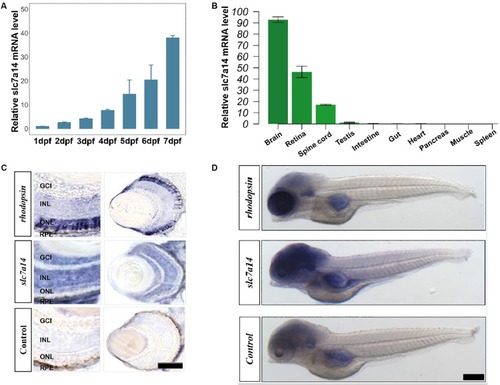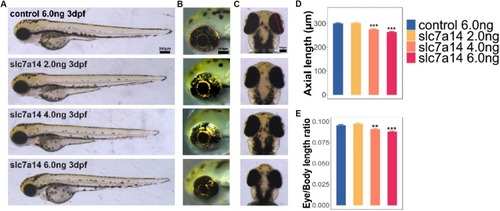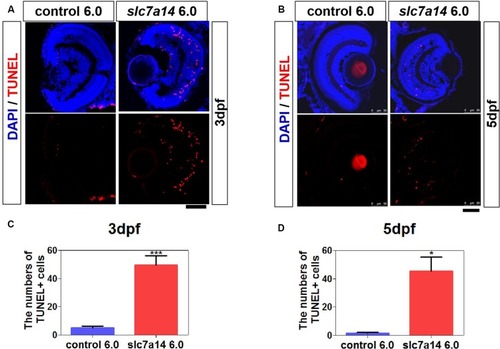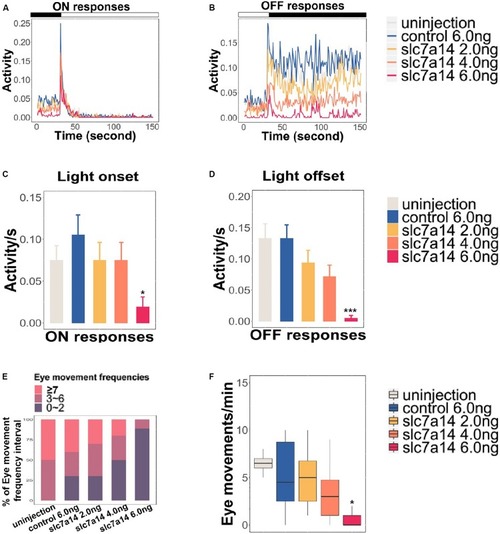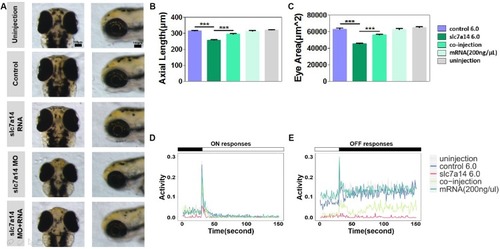- Title
-
Slc7a14 Is Indispensable in Zebrafish Retinas
- Authors
- Zhuang, Y.Y., Xiang, L., Wen, X.R., Shen, R.J., Zhao, N., Zheng, S.S., Han, R.Y., Qu, J., Lu, F., Jin, Z.B.
- Source
- Full text @ Front Cell Dev Biol
|
Spatiotemporal expression pattern of |
|
Morphology of PHENOTYPE:
|
|
Immunostaining of zpr-1, zpr-2, and zpr-3 in EXPRESSION / LABELING:
PHENOTYPE:
|
|
Knockdown of PHENOTYPE:
|
|
PHENOTYPE:
|
|
PHENOTYPE:
|

